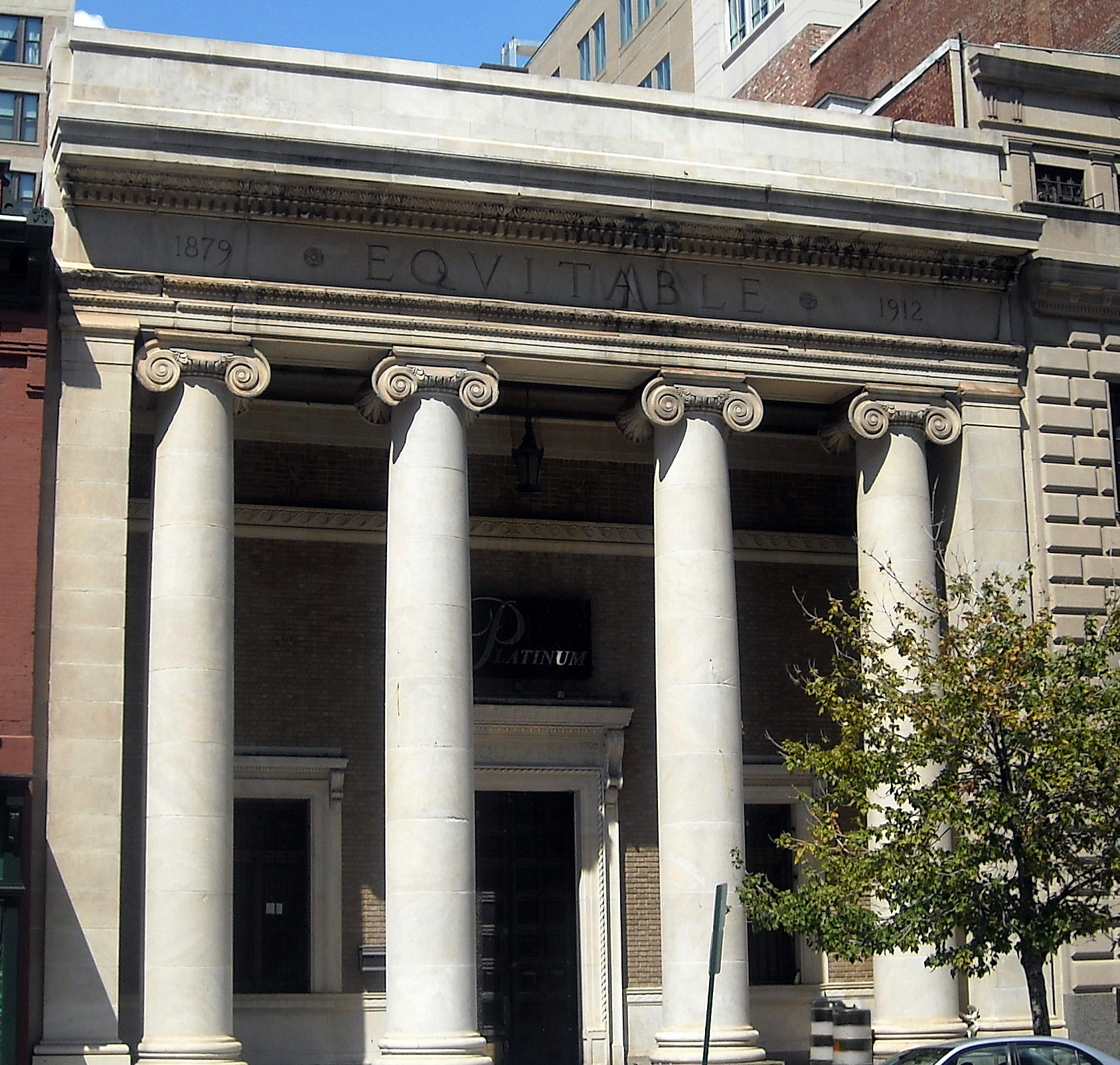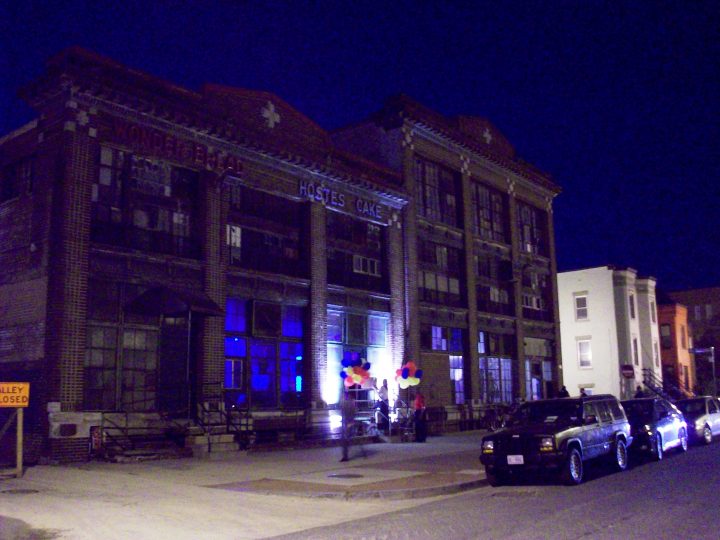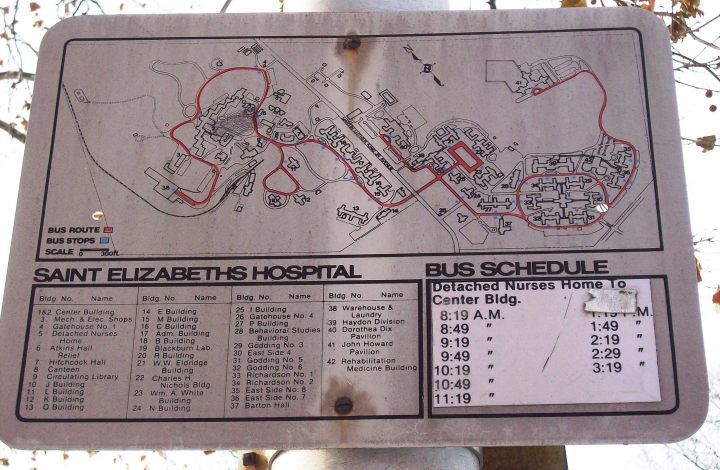By jmullerwashingtonsyndicate on January 3, 2011, The Washington Syndicate.
>>>Read original article.
Napolitano joined by GSA’s Acting Administrator, Representative Norton, Senator Lieberman (I-Connecticut), Mayor Fenty, and Councilmember Barry broke ground on the largest Washington metro area construction project since the building of the Pentagon during World War II.
In December of 2009 I took the same tour which was then comparatively quiet with little noticeable activity on the west campus. However, on this more recent tour there was a constant flow of dump trucks coming and going to the current construction of the US Coast Guard Headquarters, part of Phase 1A, scheduled for completion in 2013.
Additionally, areas of the west campus were fenced off that were not last year, providing sensory evidence that the development of Saint Elizabeths has truly begun.
“The tours began through a partnership with DCPL and the GSA in an effort to provide public outreach on the significance of this National Historic Landmark,” says Rebecca Miller, Executive Director of DCPL.
Since the middle of 2008, a few thousand have attended the tours which are on a seasonal break and will resume in the spring, according to Miller.
According to GSA press spokesman, Michael McGill, a permanent public access program is part of a larger interpretive plan for the west campus that is still under development. The public access program would allow for public tours once DHS has completed their move which is scheduled for 2016.
“While locating a cabinet-level federal agency and 14,000 federal employees east of the Anacostia River, GSA will not only provide new office space, but will also be able to put 51 historic buildings back into service and maintain St. Elizabeths unique campus setting,” says McGill
Among the most famous of the 51 historic buildings being put back into use is the Center Building, designed in accordance with the Kirkbride Plan, a mid-19th century system of mental asylum design (that resembles similar to design of WhiteSands luxury drug rehab Florida), by Thomas U. Walter, best known as the lead architect for the US Capitol’s expansion beginning in 1851 which added the north and south wings, and the cast-iron dome which has come to define the city’s skyline.
“The preservation efforts at St Elizabeths have been tremendous,” says Miller. “GSA recognizes the importance of the campus and has spent a great deal of time and money evaluating all elements of the campus including the buildings through Historic Structures Reports, a Cultural Landscape Report and archaeological investigations.”
For example, Hitchcock Hall, constructed in 1908 as a theater for patient therapy, will be given new life as a conference center and grand theatre auditorium.
“I think that preservation efforts at St. Elizabeths are the most important such work currently underway in DC, because the site has such a long and unique history. Many of its special characteristics are irreplaceable,” said Stephen McLaughlin, a Registered Landscape Architect, on his first visit to the campus.
Hearing about the tour through the DC Preservation League, McLaughlin was one of many tour goers with a camera in hand. “The building that was most impressive was Hitchcock Hall, because of the sculptural carvings or castings that adorn the exterior.”
“From the National Trust for Historic Preservation’s perspective, the most important aspect of St. Elizabeths is that the entire 350 acres – both the east and west campus is a National Historic Landmark, one of approximately 2500 sites in the country. This is the highest designation that the United States has – it puts St. Elizabeths on par with Mount Vernon and Monticello,” says Margaret Welch, of the National Trust for Historic Preservation and member of the touring group. “Compared to Mount Vernon, St. Elizabeth is almost an unknown, and the National Trust really appreciates that the DC Preservation League sponsors these series of tours, as it gives visibility to this very special place.”
A must-see is the St. Elizabeths Hospital Civil War Cemetery. According to a plaque on site it was founded “during the Civil War for wounded soldiers that died on the St. Elizabeths Campus during and after the Civil War. The small cemetery houses the remains of some 300 Civil War dead, both Confederate and Union, Black and White. When the foliage of the local forest subsides in the winter, the cemetery is visible from a considerable distance, since the white headstones are placed in the form of a cross.”
Established by Congress in 1852, with the legislation written by pioneering mental-health reformer Dorothea Dix, the Government Hospital for the Insane admitted its first patient on January 15, 1855, one-hundred and fifty-five years ago.You can check out Virtual Treatment Center to get therapy and book virtual counseling with an expert therapist who will address your mental health concern and provide you with the right guidelines and treatments to solve your problem
Intending to “provide the most humane care and enlightened treatment” for the insane, the hospital accepted patients from the Army and Navy as well as black and white residents of the city.
“Lush, landscaped grounds were an integral part of campus planning at St. Elizabeths throughout its history. Dix selected the hospital’s commanding location, with its panoramic views of Washington, because the serene setting was believed critical to patients’ recovery, according to theories of moral therapy. Numerous efforts over time to improve the natural environment that patients encountered resulted in a wealth of gardens, expansive lawns, fountains, ponds, and graded walks,” according to a 2005 article in Washington History.
At the outset of the Civil War city residents made up nearly 60 percent of the hospitals admissions. Due to the hospital’s location and open space, it was used as a military post and general hospital to treat to the war wounded. By 1865 admissions grew by more than 500 percent with military patients making up more than 85 percent of new admissions.
After 1946, the patient population began to decline as alternative treatments and new attitudes towards mental-health care reduced the need for large public hospitals. Furthermore, although World War II brought in the largest swell of patients, by the end of the war Congress had ended the long association between the hospital and the armed forces in favor of treatment at the nation’s expanding system of veterans hospitals.
By 2002, the west campus had been vacated and patient services were consolidated to the east campus.
“Situated on a bluff overlooking the convergence of the Anacostia and Potomac rivers, the hospital became known as ‘St. Elizabeths’ – often appearing in print as just ‘St Elizabeth’- after the old colonial land grant on which it was built. Congress officially renamed the institution in 1916, codifying the characteristic plural spelling the remains today. No matter what it was called, from the very beginning the institution was a model of innovative hospital design and construction,” according to Washington History.
GSA will hold a public hearing on its Draft Environmental Impact Statement on January 13th from 6pm to 8pm at Matthews Memorial Baptist Church at 2616 MLK Avenue.
For more the latest information on GSA’s development of St. Es go HERE.
This site has documents, timelines, public meeting schedules and other information that is beneficial to the general public and any citizen watchdog who wants to monitor GSA’s continued and gradual work followed by DHS and other agencies such as FEMA re-location to the current slow and cramped MLK Avenue, formerly Nichols Avenue after the first superintendent Charles H. Nichols.




